Related Research Articles
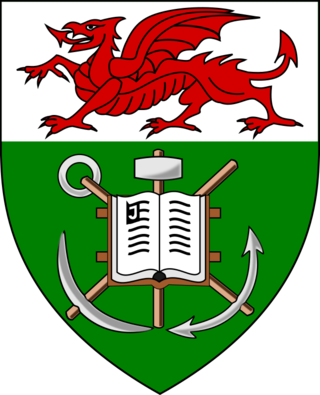
Swansea University is a public research university located in Swansea, Wales, United Kingdom.

A maggot is the larva of a fly ; it is applied in particular to the larvae of Brachycera flies, such as houseflies, cheese flies, and blowflies, rather than larvae of the Nematocera, such as mosquitoes and crane flies.
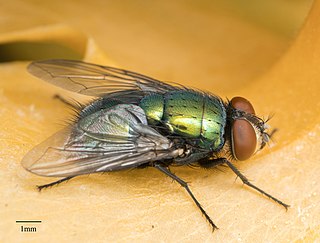
The common green bottle fly is a blowfly found in most areas of the world and is the most well-known of the numerous green bottle fly species. Its body is 10–14 mm (0.39–0.55 in) in length – slightly larger than a house fly – and has brilliant, metallic, blue-green or golden coloration with black markings. It has short, sparse, black bristles (setae) and three cross-grooves on the thorax. The wings are clear with light brown veins, and the legs and antennae are black. The larvae of the fly may be used for maggot therapy, are commonly used in forensic entomology, and can be the cause of myiasis in livestock and pets. The common green bottle fly emerges in the spring for mating.

Maggot therapy is a type of biotherapy involving the introduction of live, disinfected maggots into non-healing skin and soft-tissue wounds of a human or other animal for the purpose of cleaning out the necrotic (dead) tissue within a wound (debridement), and disinfection.
Michelle Louise Harvey is an Australian forensic scientist specialising in forensic entomology. Her research uses insect DNA to identify maggots, which helps in estimating the time since death. Harvey has published widely on her research and been a guest speaker at many conferences. She is active in the promotion of science through public speaking engagements and the media.
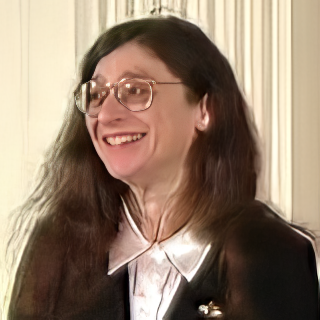
May Roberta Berenbaum is an American entomologist whose research focuses on the chemical interactions between herbivorous insects and their host plants, and the implications of these interactions on the organization of natural communities and the evolution of species. She is particularly interested in nectar, plant phytochemicals, honey and bees, and her research has important implications for beekeeping.
Dame Jean Olwen Thomas, is a Welsh biochemist, former Master of St Catharine's College, Cambridge, and Chancellor of Swansea University.
Seraticin is an antibiotic discovered by scientists at Swansea University able to inhibit 12 different strains of methicillin-resistant Staphylococcus aureus (MRSA), as well as E. coli and C. difficile. The research was funded by the charity Action Medical Research, with support from the Rosetrees Trust. Seraticin was isolated as a compound of less than 500 Da molecular weight from the maggot secretions of the common green bottle fly It was patented in 2010 and has the molecular formula C
10H
16N
6O
9, but its chemical identity is unknown.
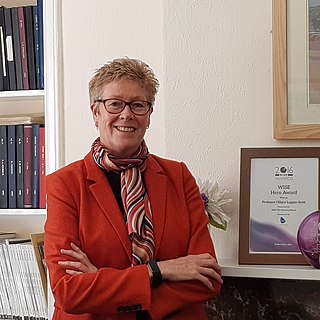
Hilary Margaret Lappin-Scott FLS FLSW PFHEA FAAM FRSB is a British microbiologist whose field of research is microbial biofilms. In 2009 Hilary was elected as the second female President of the Society for General Microbiology (SGM) in 70 years and served in this role until 2012. In September 2019 she was elected as President of the Federation of European Microbiological Societies (FEMS), being the first President from the UK.

Keith G. Harding CBE FRCGP FRCP FRCS FLSW is a British physician.
Professor Shareen Heather Doak FLSW holds a personal chair in Genotoxicology and Cancer at Swansea University and is a leading female British scientist in the field of Nanotoxicology globally.
Joyanti Chutia is an Indian physicist who specializes in solid-state physics and plasma physics. She was among the first women who have headed scientific institutions in India when she became the Director of the Institute of Advanced Study in Science and Technology in Guwahati, Assam, which is the first major research institution in North East India. She is a fellow of National Academy of Sciences. She is an Emeritus Scientist at the Department of Science & Technology in the Government of India.
Linda M. Field FRES FRSB is a British scientist noted for her work on the insecticide mode of action and resistance.
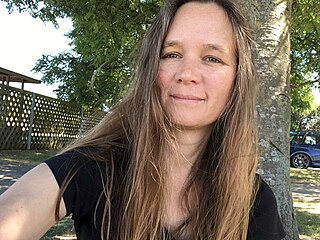
Sara L. Goodacre is a research geneticist and Professor of Evolutionary Biology and Genetics at the University of Nottingham. She is the lead for the Open Air Laboratories, a citizen science project that engages people with the outdoor environment and Deputy Director of the Biotechnology and Biological Sciences Doctoral Training Programme.
ProfessorMargaret "Meg" Stacey was a British sociologist and a leading figure in the establishment of Sociology as an academic discipline.
Jane Katharine Hill Hon.FRES is British ecologist, and professor of ecology at the University of York and is the current President of the Royal Entomological Society; research includes the effects of climate change and habitat degradation on insects.
Caroline "Carrie" Helen Lear is a Professor of Earth Science and the Head of the Changing Earth and Oceans Research Group at Cardiff University. She was awarded 2017 the Geological Society of London Bigsby Medal. She is the founding chair of the Changing Earth and Oceans Research Group and an editor of the journal Geology.
MedMagLabs is an Australian company that creates wound-care treatment systems for people in humanitarian emergencies using maggot therapy.
Fatma Serap Aksoy is a Turkish–American medical entomologist.
Angela V. John FRHistS FLSW is a Welsh historian known for her biographies, particularly of women. She is President of Llafur: The Welsh People's History Society.
References
- 1 2 "Yamni Nigam". Welsh Crucible. 11 December 2014. Retrieved 20 November 2018.
- 1 2 3 "Professor Yamni Nigam". Swansea University. Retrieved 20 November 2018.
- ↑ "Yamni Nigam". The Conversation. 18 November 2016. Retrieved 20 November 2018.
- ↑ "Professor". Swansea University. Retrieved 20 November 2018.
- ↑ "Dr. Yamni Nigam". Swansea Innovations. Retrieved 20 November 2018.
- "Successful Open Meeting of Welsh Wound Network, February". Welsh Wound Network. Retrieved 20 November 2018.
- "Home". Welsh Wound Network. Retrieved 20 November 2018. - ↑ "2014". Welsh Crucible. 24 November 2014. Retrieved 20 November 2018.
- ↑ "Professor Yamni Nigam". Swansea University. Retrieved 28 February 2019.
- ↑ "Ambulance bugs 'endanger patients'". BBC News. 3 September 2003. Retrieved 20 November 2018.
- ↑ "Love a Maggot". Swansea University. Retrieved 20 November 2018.
- ↑ "Love a Maggot". Swansea University. Retrieved 28 February 2019.
- ↑ "Squeamish Brits struggle to accept maggot therapy". Economic and Social Research Council. Retrieved 20 November 2018.
- ↑ "Here's why maggots could be key to killing antibiotic-resistant superbugs". Global News. Retrieved 20 November 2018.
- Stock, Matthew. "Maggots under microscope for superbug-killing secretions". Reuters. Retrieved 20 November 2018. - ↑ Smith, Mark (2 February 2017). "Why MAGGOTS are playing such a vital role in NHS treatment". Wales Online. Retrieved 20 November 2018.
- "Creepy, crawly maggots are actually a medical powerhouse" . The Independent. Archived from the original on 7 May 2022. Retrieved 20 November 2018.
- "Maggots 'key' to new antibiotics". BBC News. 2 February 2017. Retrieved 20 November 2018. - ↑ "Alice Gray on the Welsh women scientists who took to their soapboxes". Womanthology. 16 July 2014. Retrieved 20 November 2018.
- 1 2 "WISE Awards 2018 Winners!". WISE Campaign. Retrieved 20 November 2018.